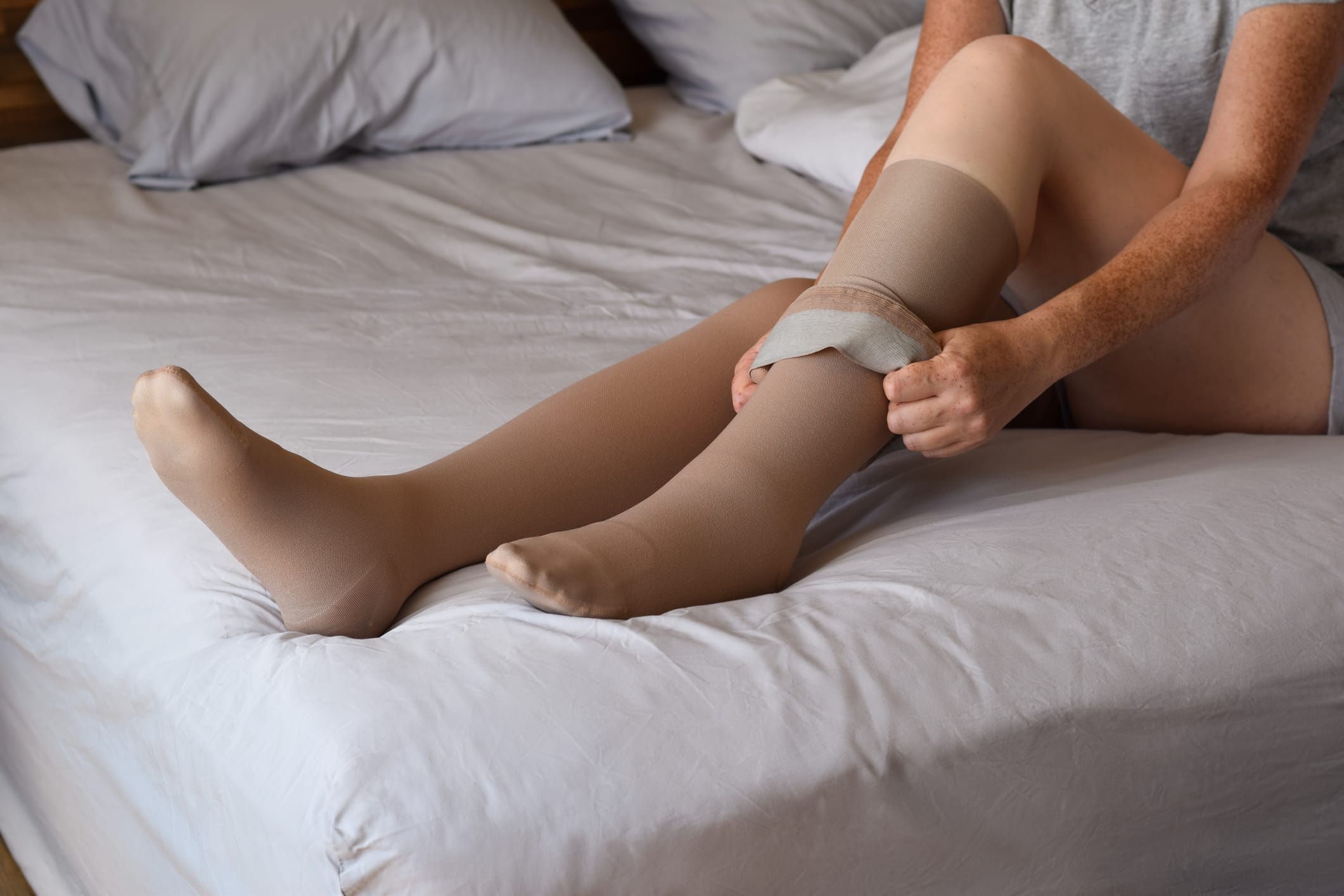Heavy, uncomfortable legs and heart problems go hand-in-hand. Swelling (edema) of the legs, ankles and feet is a common symptom of transthyretin amyloid cardiomyopathy (ATTR-CM). Compression socks or stockings can be useful in relieving this swelling. While they are available over the counter, not all compressions socks are the same, and it’s best to consult with your healthcare team before trying them.
What are compression socks?
Compression socks are designed to support circulation by applying gentle pressure. This helps blood flow back to the heart instead of pooling in the legs.
They are made of a mix of fabrics, such as nylon, spandex, polyester and cotton, and designed to be elastic, breathable, quick-drying, durable, and lightweight. Most compression socks have a graduated compression effect, meaning they are tighter at the ankle and looser at the calf.
Different pressures of compression stockings are available, ranging from mild (8 mmHg to 15 mmHg) and moderate (15 mmHg to 20 mmHg), which are more commonly used, to firm (20 mmHg to 30 mmHg) and extra firm (30 mmHg to 40 mmHg and over), which should be approved by your doctor before use. In cases of severe heart failure or advanced ATTR-CM, too much pressure can exacerbate symptoms and lead to cardiac complications.
Support socks with lighter compression are widely available over-the-counter and worn by many people to help with circulation, from marathon runners to flight attendants. These over-the-counter socks don’t usually have the higher levels of pressure that medical-grade compression socks carry, however. Medical-grade compression socks are also sometimes covered by insurance.
The usual recommendation is to wear compression socks during the day, starting in the morning before any swelling has occurred, and then remove them at night before bed; your doctor will provide specific advice on when to wear them.
Benefits of compression socks in ATTR-CM
Swelling of the legs, ankles and feet – also called peripheral edema — in people with ATTR-CM is due to poor circulation, and also water retention. It is a common symptom of heart failure, associated with poor cardiac function.
Read more about ATTR-CM signs and symptoms
Wearing compression socks helps improve the flow of blood back to the heart, which stops it from settling in the lower extremities. They can also help manage low blood pressure, another symptom of ATTR-CM that leads to dizziness when standing up. Additionally, compression stockings help provide your legs with comfort and support.
The benefits of compression socks can be enhanced by staying active and reducing your sodium levels.
Discuss the option of compression socks with your healthcare team. If they advise you to try them, ask for a prescription to take to a medical supply store, where they will take your measurements and fit you accordingly.
Sign up here to get the latest news, perspectives, and information about ATTR-CM sent directly to your inbox. Registration is free and only takes a minute.

